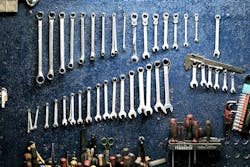While many, if not all, businesses have been hit hard by the COVID-19 pandemic, some have been hit more than others. Here’s a mini list of the top 10 industries that have been affected and how many jobs had been lost between February and April, according to Business Insider.
-
Scenic transportation (62.1%)
-
Amusement parks and casinos (59.9%)
-
Clothing stores (58.9%)
-
Laundry and personal services (53.5%)
-
Dentist offices (53.3%)
-
Motion picture and sound recording (48.3%)
-
Restaurants and bars (48.1%)
-
Furniture and home furnishings stores (46.3%)
-
Sports and performing arts (45.4%)
-
Hotels (42.3%)
For quick lube businesses, however, a rebound is happening, according to operators who responded to a recent National Oil and Lube News survey. Back in April, NOLN asked operators around the nation just how much the pandemic and its stay-at-home orders affected business.
Getting Assistance
Although some businesses had to lay off some employees, 72 percent of respondents said they didn’t have to whatsoever, and it was all thanks to the financial loan programs created amid the pandemic. More than three-quarters (78 percent) of respondents said that they had received outside financial assistance in recent months. Nearly all reported that the money came from the Paycheck Protection Program, which was part of the federal government's CARES Act, along with a couple reported taking advantage of Economic Injury Disaster Loans (EIDL).
The popularity of the PPP loan stems from the idea of loan forgiveness, while the EIDL does not qualify for loan forgiveness. Applying for the PPP loan, however, had become more complicated than borrowers had expected. There have been 20 updates—yes, 20—to the loan since it’s initial release back in March, according to Brad Mewes, Principal at Supplement Advisory. That comes to at least one update per week. One of the updates, according to Mewes, includes how much of the loan should go to payroll. The former 75/25 Rule stated that 75 percent of the loan must go to payroll, but, as of right now, only 60 percent of the loan needs to cover payroll for employees.
While the PPP helped many businesses recover, others weren’t so lucky. In June’s survey, 22 percent of respondents said they didn’t receive any loans, even though about $130 billion was left over the day the application was set to expire on June 30, according to The Wall Street Journal. However, on Independence Day, the PPP was extended through Aug. 8 for eligible small businesses to use up the loans to the last drop.
Making Changes
With struggles came the need to adapt, and the survey made sure to ask respondents to share some of the operational changes they've made in recent months. Most shops that didn't already have a drive-thru model adopted one to minimize customer movement or contact. Nearly all shops looked to improve touchless processes and hygiene. Out of the 64 percent of respondents, here are just a few service changes that operators have implemented:
-
Customer remains in the vehicle and performs their own reset and engine start to test.
-
No longer offering vacuum service
-
Staff members wear masks upon customer interactions and sanitize keys and all vehicle touch surfaces before and after the service.
-
Email receipts
-
Halt cabin air filter changes
-
Installed plexi separators in bays
One operator even decided to add on a second profit center to lower the pandemic’s cost on business, making his very own hand sanitizer at his shop—check out this podcast on how this shop owner made his own Fast-Tizer.
April vs. June
Back in April, 97 percent of operators said that their business had been negatively impacted by the closures amid COVID-19, but 78 percent of those operators said that they were confident about the future of their business.
On a positive note, the survey conducted in mid-June found that three-quarters of operators have seen either an overall modest or significant increase in business since March, with only about 19 percent saying business had decreased.
As for the future of business, April’s optimism further grew over the ensuing months, and this most recent survey found that 91 percent of operators feel positive about the outlook for the rest of 2020.
